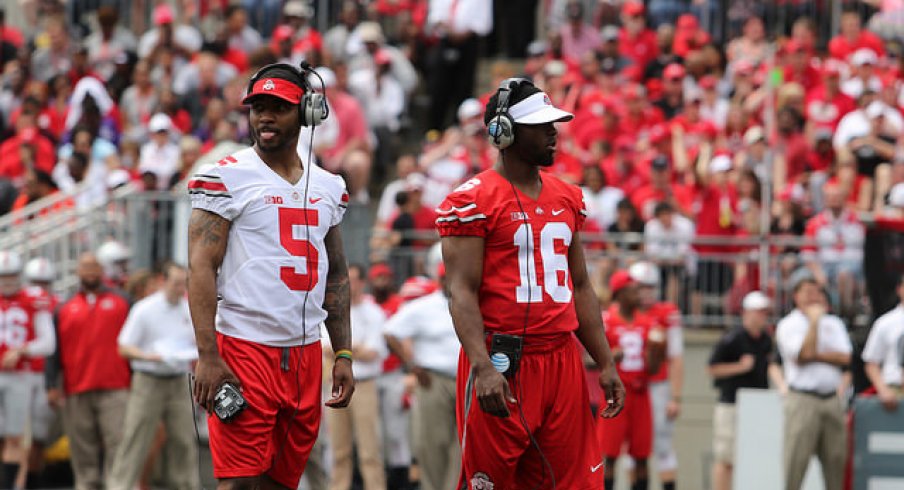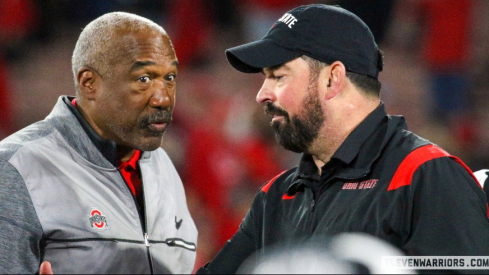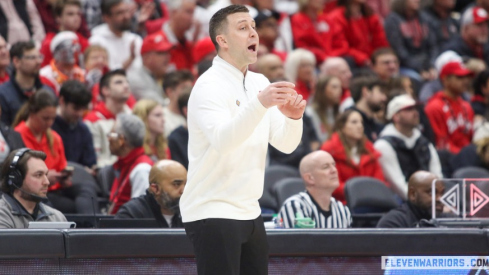During a recent press conference, Urban Meyer was confident about Braxton Miller. “He’s in the best shape he’s ever been in in his life…he’s lost a little bit of weight; he’s real muscular. He’s done a great job.”
There is a stigma surrounding injured athletes. Especially when an injured athlete receives medical clearance to return to full participation, there is oftentimes an air of apprehension enveloping the comeback. The fans may cringe with every tackle. The coaches and medical staff might analyze the mechanics of every pivot. The opponents could view the athlete as weak or vulnerable. The athlete himself may experience some hesitancy.
All of these feelings might be reasonable reactions to an initial return-to-play, but the opposite side of the coin is sometimes overlooked: What if the injured athlete returns stronger, faster, smarter, and more fine-tuned? What if the athlete is different? What if the athlete is better? This possibility is more than just, well, possible. Such a feat has been accomplished, and many remarkable instances are well documented.
Take Dr. James Andrews, for example. That is a household name for many sports fanatics. Chances are, most could also rattle off the names of a number of his patients. But how did Dr. Andrews rise to such fame? When did he become the go-to orthopedic surgeon? When did the most elite athletes start flying across the country for visits to his office?
That part of his story began in the mid-1980s. He repaired Jack Nicklaus’ knee, and Nicklaus returned to win the Masters. He repaired Roger Clemens’ shoulder, and Clemens returned to win the Cy Young Award. These outstanding post-injury comebacks were the springboard for Dr. Andrews’ career. The rest is history.
There are countless other examples. NBA superstar Michael Jordan fractured his foot in 1985, but he returned in the playoffs that season to score 63 points against the Boston Celtics.
In 2005, NFL quarterback Drew Brees tore his labrum and rotator cuff. In 2010, he led the New Orleans Saints to a Super Bowl XLIV championship, and he was even named the game’s MVP.
NFL running back Adrian Peterson tore his MCL and ACL in 2011, but came back with a show of extraordinary talent in 2012 with 2,097 rushing yards, the most in the league that season. He was named the 2012 NFL MVP.
After his 2011 season, Indianapolis Colts quarterback Peyton Manning underwent multiple neck surgeries. He returned as a Denver Bronco and led his team to a Super Bowl appearance in 2013.
These successes are just a handful of the many great comebacks in sports history.
The world of sports medicine can be perceived as negative. All of our patients have a complaint. That’s encompassed in their designation as patients. All of our patients are hurting. All of our patients want to return to sports as soon as possible. Therefore, yes, visiting a sports medicine office can feel like a negative experience.
However, if we look at the injured athlete as having a window of opportunity for growth and development in other aspects of his game, such setbacks could rather be viewed as possibilities for improvement. A mandatory rehabilitation period can be embraced. Weaknesses can be addressed. Mental stamina can be harnessed. Visualization techniques can be sharpened. Endurance can be maximized.
Medical staff members who support and encourage this approach are to be celebrated, and athletes with the mindset to turn an injury into an opportunity should be commended. They have risen above the seemingly negative circumstances. These athletes create great stories. They inspire teammates, coaches, and fans. Braxton Miller is one of these athletes, and we couldn’t be more proud to call him a Buckeye.


